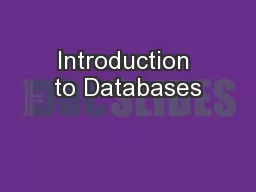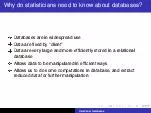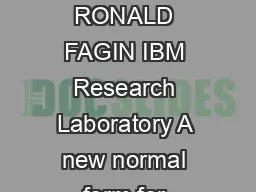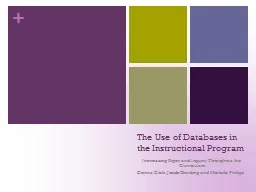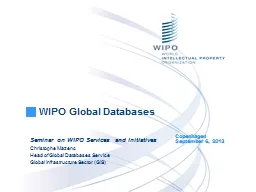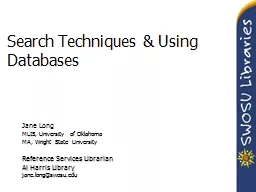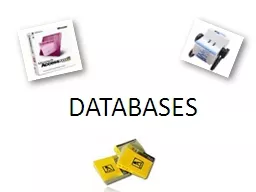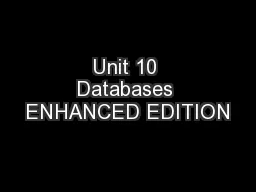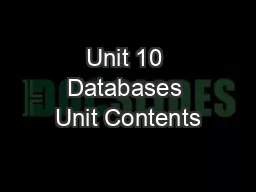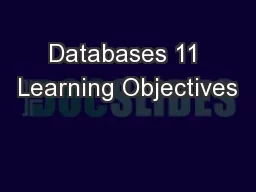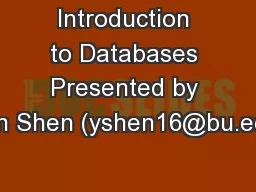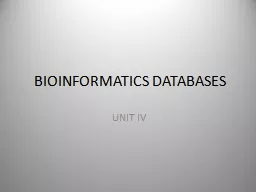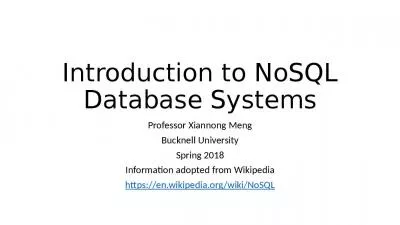PPT-Introduction to Databases
Author : marina-yarberry | Published Date : 2016-02-26
CS162 Guest Lecture Sam Madden maddencsailmitedu Zoo Data Model Entity Relationship Diagram Animal Cage Keeper keeps Name 1 name Time 1 feedTime Age Name Species
Presentation Embed Code
Download Presentation
Download Presentation The PPT/PDF document "Introduction to Databases" is the property of its rightful owner. Permission is granted to download and print the materials on this website for personal, non-commercial use only, and to display it on your personal computer provided you do not modify the materials and that you retain all copyright notices contained in the materials. By downloading content from our website, you accept the terms of this agreement.
Introduction to Databases: Transcript
Download Rules Of Document
"Introduction to Databases"The content belongs to its owner. You may download and print it for personal use, without modification, and keep all copyright notices. By downloading, you agree to these terms.
Related Documents

